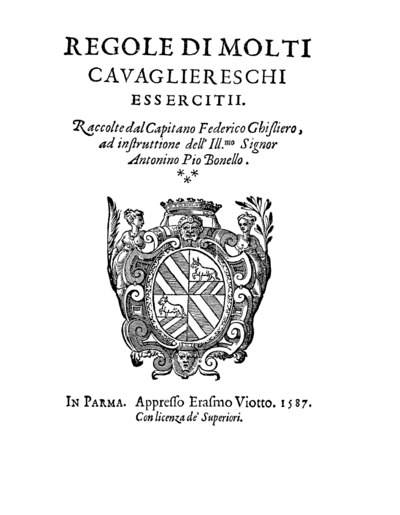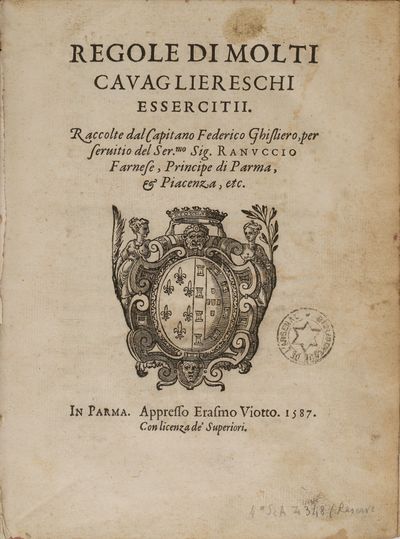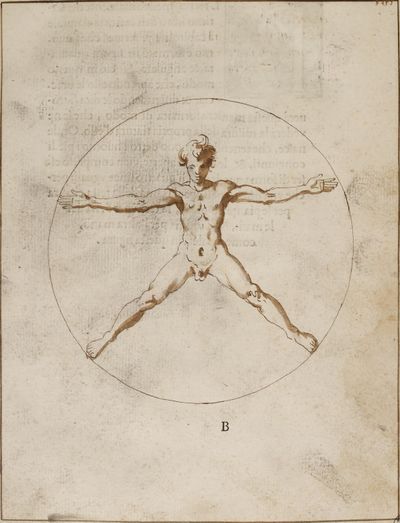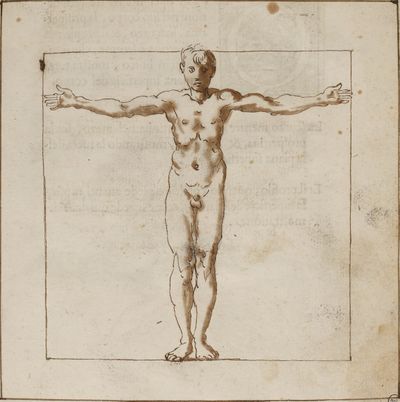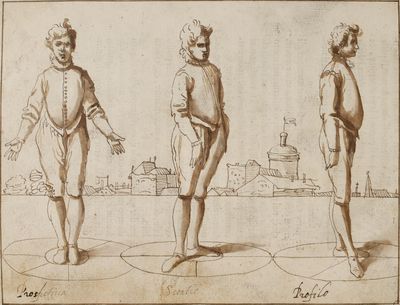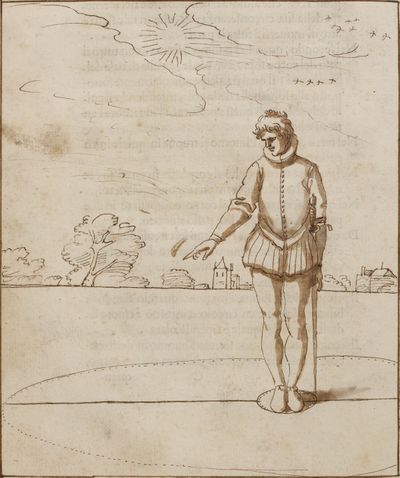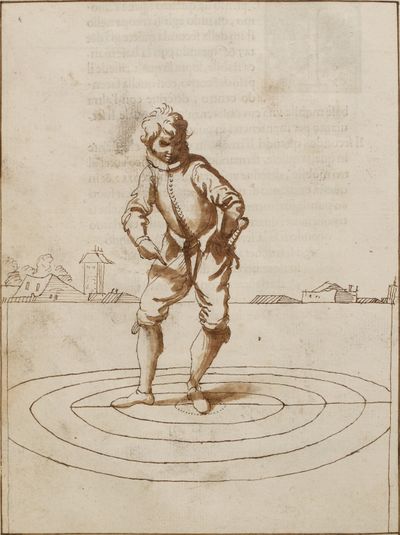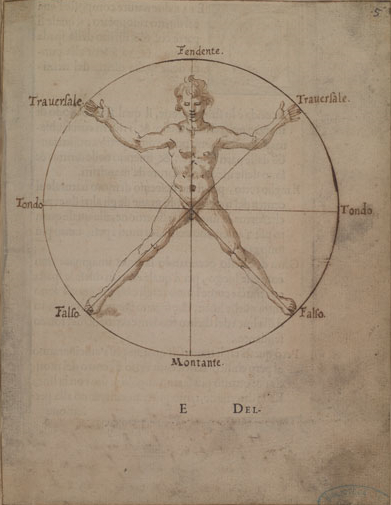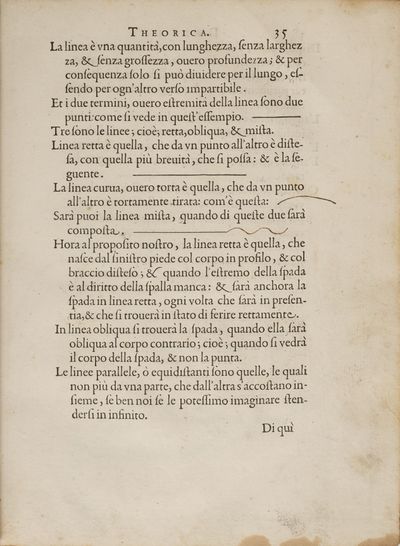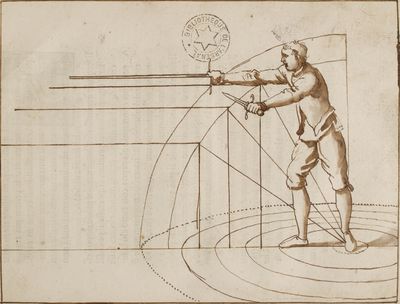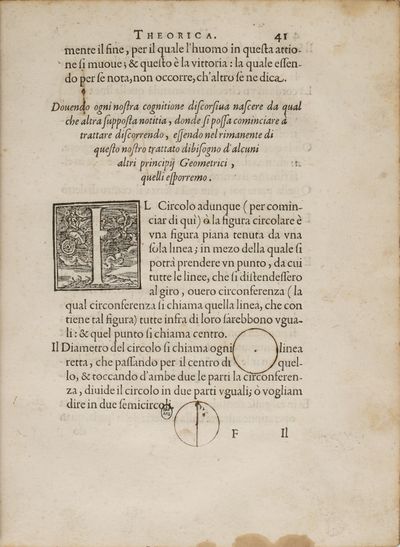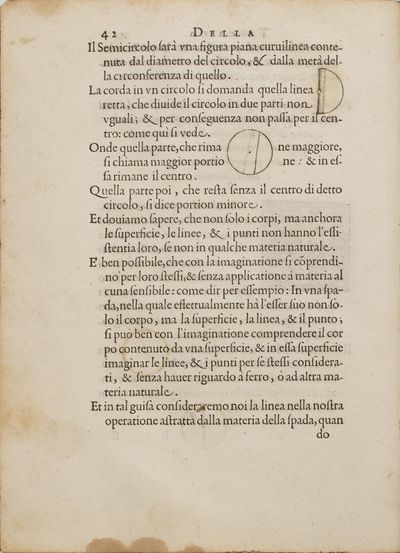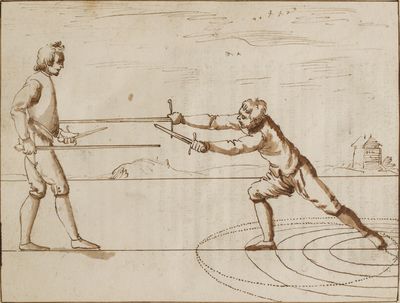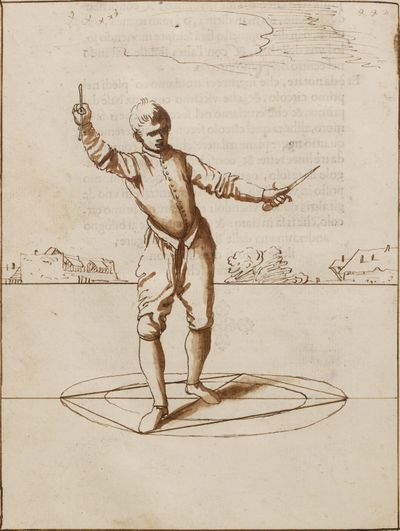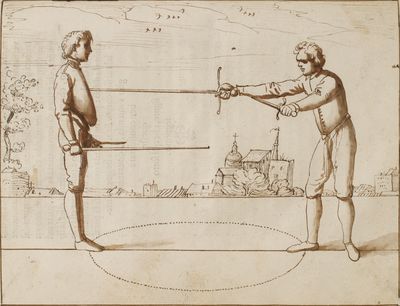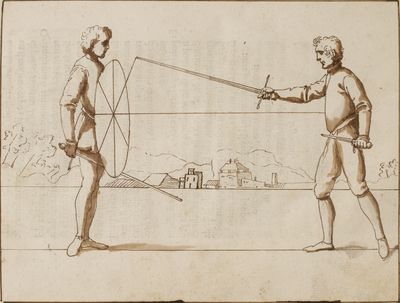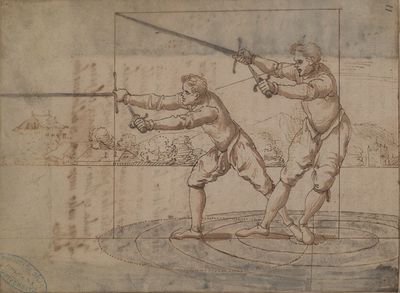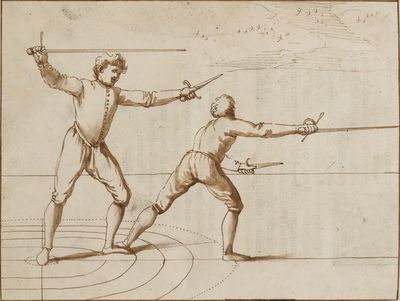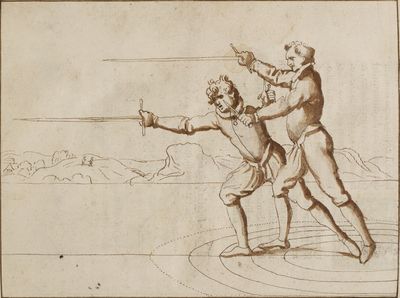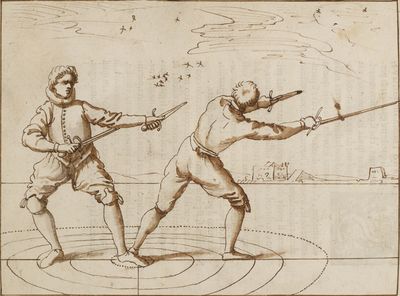|
|
You are not currently logged in. Are you accessing the unsecure (http) portal? Click here to switch to the secure portal. |
Difference between revisions of "Federico Ghisliero"
(→Temp) |
(→Temp) |
||
| (13 intermediate revisions by the same user not shown) | |||
| Line 34: | Line 34: | ||
}} | }} | ||
{{master subsection begin | {{master subsection begin | ||
| − | | title = Antonio Pio Bonello | + | | title = Dedication to Antonio Pio Bonello |
| width = 90em | | width = 90em | ||
}} | }} | ||
| Line 41: | Line 41: | ||
! <p>Images</p> | ! <p>Images</p> | ||
! <p>{{rating|C}}<br/>by [[Nicola Boyd]]</p> | ! <p>{{rating|C}}<br/>by [[Nicola Boyd]]</p> | ||
| − | ! <p>Transcription<br/>by [[ | + | ! <p>Transcription<br/>by [[Michaael Chidester]]</p> |
|- | |- | ||
| Line 53: | Line 53: | ||
|- | |- | ||
| − | | <p>'''To the Most Illustrious Lord Antonio Pio Bonello,''' son of the | + | | <p>'''To the Most Illustrious Lord Antonio Pio Bonello,''' son of the Most Excellent Lord Girolamo Bonello, Marquis of Cassano.<br/><br/></p> |
<p>'''F'''or ''two reasons, my Most Illustrious Sir, it has pleased me to direct to Your Most Illustriousness the present book of mine, which I have written here and now, and with good reason, on the use of arms. The first, so that with this new birth of mine I may wish you well, having intercepted with infinite pleasure the marriage which followed between you and the Most Illustrious Lady Octavia Bagliona: with which your Most Illustrious House may hope for a most happy succession: just as I desire that my birth, under the protection of your name, may live for a long time in safety. The other, so that by reading in this book, Your Illustriousness will be able to recognise in it those precepts, which perhaps up to now have been shown to you by a good Master in the handling of arms, your own virtue, which you have wished to adorn with many others in this most tender anchorage of yours. Therefore, let this effort of mine not be discouraging to you: for if it could be weak in itself, nevertheless, by reading it, Your Illustriousness will understand that you will be able to see much more than your own strength and merit would allow. I would like to thank Your Illustriousness for this letter. I kiss your hands.''</p> | <p>'''F'''or ''two reasons, my Most Illustrious Sir, it has pleased me to direct to Your Most Illustriousness the present book of mine, which I have written here and now, and with good reason, on the use of arms. The first, so that with this new birth of mine I may wish you well, having intercepted with infinite pleasure the marriage which followed between you and the Most Illustrious Lady Octavia Bagliona: with which your Most Illustrious House may hope for a most happy succession: just as I desire that my birth, under the protection of your name, may live for a long time in safety. The other, so that by reading in this book, Your Illustriousness will be able to recognise in it those precepts, which perhaps up to now have been shown to you by a good Master in the handling of arms, your own virtue, which you have wished to adorn with many others in this most tender anchorage of yours. Therefore, let this effort of mine not be discouraging to you: for if it could be weak in itself, nevertheless, by reading it, Your Illustriousness will understand that you will be able to see much more than your own strength and merit would allow. I would like to thank Your Illustriousness for this letter. I kiss your hands.''</p> | ||
| Line 74: | Line 74: | ||
{{master subsection begin | {{master subsection begin | ||
| − | | title = Ranuccio Farnese | + | | title = Dedication to Ranuccio Farnese |
| width = 90em | | width = 90em | ||
}} | }} | ||
| Line 81: | Line 81: | ||
! <p>Images</p> | ! <p>Images</p> | ||
! <p>{{rating|C}}<br/>by [[Nicola Boyd]]</p> | ! <p>{{rating|C}}<br/>by [[Nicola Boyd]]</p> | ||
| − | ! <p>Transcription<br/>by [[ | + | ! <p>Transcription<br/>by [[Michaael Chidester]]</p> |
|- | |- | ||
| Line 1,842: | Line 1,842: | ||
|} | |} | ||
{{master subsection end}} | {{master subsection end}} | ||
| − | + | ||
{{master subsection begin | {{master subsection begin | ||
| title = Chapter 13 | | title = Chapter 13 | ||
| Line 1,855: | Line 1,855: | ||
|- | |- | ||
| | | | ||
| − | | <p>''Now that we have described the theorems of this art, it remains for us to demonstrate the practice. But before describing it, since this little digression, which I am about to make, is so much in keeping with our purpose, even if it is to enter into another subject, and since it will give great pleasure to those who will make the profession, and will also serve to increase their understanding, I have decided to deal briefly, and in general, with the offences and defences of fortresses. And only only those that can be applied to our own particular faculties, in order to learn how to defend our own bodies and offend those of the enemy.''</p> | + | | <p>'''Now that we have described''' ''the theorems of this art, it remains for us to demonstrate the practice. But before describing it, since this little digression, which I am about to make, is so much in keeping with our purpose, even if it is to enter into another subject, and since it will give great pleasure to those who will make the profession, and will also serve to increase their understanding, I have decided to deal briefly, and in general, with the offences and defences of fortresses. And only only those that can be applied to our own particular faculties, in order to learn how to defend our own bodies and offend those of the enemy.''</p> |
| {{section|Page:Regole di molti cavagliereschi essercitii (Federico Ghisliero) 1587.pdf/107|1|lbl=93.1}} | | {{section|Page:Regole di molti cavagliereschi essercitii (Federico Ghisliero) 1587.pdf/107|1|lbl=93.1}} | ||
| Line 1,906: | Line 1,906: | ||
|- | |- | ||
| | | | ||
| − | | | + | | <p>Similarly, when the enemy is in motion, we shall attack him by making a sortie in the fourth circumference, because while he is in motion he will not be able to respond with a wounding attack.</p> |
| {{section|Page:Regole di molti cavagliereschi essercitii (Federico Ghisliero) 1587.pdf/110|3|lbl=96.3}} | | {{section|Page:Regole di molti cavagliereschi essercitii (Federico Ghisliero) 1587.pdf/110|3|lbl=96.3}} | ||
|- | |- | ||
| | | | ||
| − | | | + | | <p>A part of a good, well-armed soldiery is chosen to undertake the sortie and is secretly taken to the ''strada coperta''. The enemy is suddenly attacked, and then in order that the said soldiery may be secure in its retreat, the walls are armed and use the ''archibuseria'' to defend the soldiery.</p> |
| {{section|Page:Regole di molti cavagliereschi essercitii (Federico Ghisliero) 1587.pdf/110|4|lbl=96.4}} | | {{section|Page:Regole di molti cavagliereschi essercitii (Federico Ghisliero) 1587.pdf/110|4|lbl=96.4}} | ||
|- | |- | ||
| | | | ||
| − | | | + | | <p>In the same way, we shall choose the best of the attacks and suddenly wound the enemy; for he, having seen us so far from his body, does not expect such an attack. But in order to be able to retreat in safety, we shall attack him with a ''riverso traversale''<ref>''Riverso traversale'' means a transverse or diagonal blow during retreat. “It’s equivalent to a ''riversa squalembrato'' or ''falso manco'', depending on whether ascending or descending.” [note from Henry Fox]</ref> on the retreat, which we shall make on the way to the ''strada coperta''.</p> |
| {{section|Page:Regole di molti cavagliereschi essercitii (Federico Ghisliero) 1587.pdf/110|5|lbl=96.5}} | | {{section|Page:Regole di molti cavagliereschi essercitii (Federico Ghisliero) 1587.pdf/110|5|lbl=96.5}} | ||
|- | |- | ||
| | | | ||
| − | | | + | | <p>But the offense, which cannot be carried out against fortresses by day is easily carried out by night by gaining the bulwark [or battlements]. Consequently one arrives at the trench, and because the true offense is that which is carried out when one is sure of not being offended, one must pull the ropes and take the trenches. By this means and by covering oneself, one approaches the trench.</p> |
| | | | ||
{{section|Page:Regole di molti cavagliereschi essercitii (Federico Ghisliero) 1587.pdf/110|6|lbl=96.6|p=1}} {{section|Page:Regole di molti cavagliereschi essercitii (Federico Ghisliero) 1587.pdf/111|1|lbl=97.1|p=1}} | {{section|Page:Regole di molti cavagliereschi essercitii (Federico Ghisliero) 1587.pdf/110|6|lbl=96.6|p=1}} {{section|Page:Regole di molti cavagliereschi essercitii (Federico Ghisliero) 1587.pdf/111|1|lbl=97.1|p=1}} | ||
| Line 1,927: | Line 1,927: | ||
|- | |- | ||
| | | | ||
| − | | | + | | <p>So we, while we are offending our opponent, will always make with our dagger a semi-circle in motion, which will defend our body.</p> |
| {{section|Page:Regole di molti cavagliereschi essercitii (Federico Ghisliero) 1587.pdf/111|2|lbl=97.2}} | | {{section|Page:Regole di molti cavagliereschi essercitii (Federico Ghisliero) 1587.pdf/111|2|lbl=97.2}} | ||
|- | |- | ||
| | | | ||
| − | | | + | | <p>The trench will dominate the corner of bulwark inside and must be attacked so that it will create a trap that the enemy, discovering the will of his opponent, does not have time to [discover] and defend himself.</p> |
| {{section|Page:Regole di molti cavagliereschi essercitii (Federico Ghisliero) 1587.pdf/111|3|lbl=97.3}} | | {{section|Page:Regole di molti cavagliereschi essercitii (Federico Ghisliero) 1587.pdf/111|3|lbl=97.3}} | ||
|- | |- | ||
| class="noline" | | | class="noline" | | ||
| − | | class="noline" | | + | | class="noline" | <p>So if our enemy tries to dominate us with the sword or the dagger (because our hands, which are our bulwarks, are mobile) we will not allow it. On the contrary, we will continuously dominate our opponent’s sword and dagger so that our body will not be wounded.</p> |
| class="noline" | {{section|Page:Regole di molti cavagliereschi essercitii (Federico Ghisliero) 1587.pdf/111|4|lbl=97.4}} | | class="noline" | {{section|Page:Regole di molti cavagliereschi essercitii (Federico Ghisliero) 1587.pdf/111|4|lbl=97.4}} | ||
| Line 1,955: | Line 1,955: | ||
|- | |- | ||
| | | | ||
| + | | <p>''Assuming, that our opponent has made the trenches; and that he has approached the pit wishing to enter the fortress with them, it will be convenient to clear the way with the offense.''</p> | ||
| + | | {{section|Page:Regole di molti cavagliereschi essercitii (Federico Ghisliero) 1587.pdf/112|1|lbl=98.1}} | ||
| + | |||
| + | |- | ||
| | | | ||
| + | | <p>There are three ways in which fortresses are offended, namely, </p> | ||
| + | * the hidden underground; | ||
| + | * with the battery, the hoe, the shovel, and the stove; or | ||
| + | * with the air; that is, when the cavalry is raised in such a way that those inside cannot appear for defense. | ||
| + | | {{section|Page:Regole di molti cavagliereschi essercitii (Federico Ghisliero) 1587.pdf/112|2|lbl=98.2}} | ||
| + | |||
| + | |- | ||
| | | | ||
| + | | <p>There are three ways in which our fortress [body] can be attacked: with low attacks, with middle attacks, and with the others above.</p> | ||
| + | | {{section|Page:Regole di molti cavagliereschi essercitii (Federico Ghisliero) 1587.pdf/112|3|lbl=98.3}} | ||
|- | |- | ||
| | | | ||
| + | | <p>When fortresses are attacked by mines and quarries, the defender tries to recognize the place, which he does with real instruments. For when the lower places are hit, the sign of the movement is given by these instruments; and when the defender is assured of the place, he either cuts off that part of the fortress, detaching it from the whole body of the fortress, or he finds the other part with the same pit, in order to make the mine disappear, and to make it go out; or he tries to destroy it with water or fire.</p> | ||
| + | | {{section|Page:Regole di molti cavagliereschi essercitii (Federico Ghisliero) 1587.pdf/112|4|lbl=98.4}} | ||
| + | |||
| + | |- | ||
| | | | ||
| + | | <p>In the same way, when we are offended by low lines, as when the enemy makes an quartered, armoured attack, we will counter them by bending in our belts [sucking in our stomachs]; and we will not allow them to fall into the circle of our body.</p> | ||
| + | | {{section|Page:Regole di molti cavagliereschi essercitii (Federico Ghisliero) 1587.pdf/113|1|lbl=99.1}} | ||
| + | |||
| + | |- | ||
| | | | ||
| + | | <p>Overt attacks on the ground are principally made with artillery, which is used to make a breach and raise the defences, so that the ditch is gained, which can then be attacked with the hoe, shovel and stove.</p> | ||
| + | | {{section|Page:Regole di molti cavagliereschi essercitii (Federico Ghisliero) 1587.pdf/113|2|lbl=99.2}} | ||
|- | |- | ||
| | | | ||
| − | | | + | | <p>The artillery should be placed as close as possible to the place where it is to be used, if the site allows it: because the closer the weight of violent motion through the air, the greater the effect it will have on a resisting body, the closer it will be to the driving force, and the greater the effect: and this effect is very important in order to obtain the goal in a short time, which is most valuable in attacking fortresses, as well as being less costly.</p> |
| − | | | + | | {{section|Page:Regole di molti cavagliereschi essercitii (Federico Ghisliero) 1587.pdf/113|3|lbl=99.3}} |
|- | |- | ||
| | | | ||
| − | | | + | | <p>Therefore, we shall attack as much as possible when the enemy is so far away from us that we are sure to be able to engage him with our strength; for if we begin our offense from a distance, we shall lose time and show contempt, and by uncovering ourselves give the enemy the opportunity to attack us; and when we are a little farther away, we shall advance first with our left foot, and then with our right foot we shall make the attack.</p> |
| − | | | + | | {{section|Page:Regole di molti cavagliereschi essercitii (Federico Ghisliero) 1587.pdf/113|4|lbl=99.4}} |
|- | |- | ||
| | | | ||
| − | | | + | | <p>The greatest effect of the artillery in its strike is when the ball attacks the flat surface of the wall at a right angle, because the diameter of the ball operates entirely in the offense, and when the ball strikes obliquely, part of the diameter touches the wall and part goes empty.</p> |
| − | | | + | | {{section|Page:Regole di molti cavagliereschi essercitii (Federico Ghisliero) 1587.pdf/114|1|lbl=100.1}} |
|- | |- | ||
| | | | ||
| − | | | + | | <p>In the same way, the attack must be made at a right angle, i.e. we must ensure that the sword in its attack forms a right angle with the flat surface of the body, so that in such a position the sword against us becomes oblique to our body. Furthermore, when the attacks are oblique, they are avoided with every slightest movement of the body and become useless.</p> |
| − | | | + | | {{section|Page:Regole di molti cavagliereschi essercitii (Federico Ghisliero) 1587.pdf/114|2|lbl=100.2}} |
|- | |- | ||
| | | | ||
| − | | | + | | <p>The place where the battery is to be made is on the face of one of the bulwarks, since once the defences of the other have been raised, and that side is defended, and those above it, it is safe to walk to the assault.</p> |
| − | | | + | | {{section|Page:Regole di molti cavagliereschi essercitii (Federico Ghisliero) 1587.pdf/114|3|lbl=100.3}} |
|- | |- | ||
| | | | ||
| − | | | + | | <p>In the same way, we will beat the enemy’s bulwark which will be the hand that is closest to us and consequently we will keep ours far from offense.</p> |
| − | | | + | | {{section|Page:Regole di molti cavagliereschi essercitii (Federico Ghisliero) 1587.pdf/114|4|lbl=100.4}} |
|- | |- | ||
| | | | ||
| + | | <p>Some believe that the ''cortina'' should be beaten, since it is weaker than the bulwark’s flank and face. This is because of its breadth, and because of the space it provides for retreat: for the benefit of which one can stand on horseback with the assailants which is not the case when the ''cortina'' is beaten as there is no place to retreat to, except on the plain; besides which the way is wider. But they do not consider that it would be in the midst of five attacks, of which there are four on each side and one on each front.</p> | ||
| | | | ||
| − | | | + | {{section|Page:Regole di molti cavagliereschi essercitii (Federico Ghisliero) 1587.pdf/114|5|lbl=100.5|p=1}} {{section|Page:Regole di molti cavagliereschi essercitii (Federico Ghisliero) 1587.pdf/115|1|lbl=101.1|p=1}} |
|- | |- | ||
| | | | ||
| − | | | + | | <p>Therefore we always seek to attack those parts of the body which are part of the defence. This is why we shall always seek to would the part of the body that is furthest out [from the centre] and nearest to us, for it will be the weakest, as it is in fortresses, and will lack defence.</p> |
| − | | | + | | {{section|Page:Regole di molti cavagliereschi essercitii (Federico Ghisliero) 1587.pdf/115|2|lbl=101.2}} |
| − | + | ||
| − | |- | + | |- |
| − | | | + | | |
| − | | | + | | <p>Since we see that the most defensible part of the wall is the ''cortina'', since the bulwarks are made to defend it, and of this the wall which forms the angle with the flank is the most defensible, we shall always concede to the enemy the point of our ''cortina'', which is the right flank: so that we may find ourselves in a better defence; and we require the enemy to submit to many offences.</p> |
| − | | | + | | {{section|Page:Regole di molti cavagliereschi essercitii (Federico Ghisliero) 1587.pdf/115|3|lbl=101.3}} |
| − | + | ||
| − | |- | + | |- |
| − | | | + | | |
| − | | | + | | <p>Therefore, when the enemy wishes to attack at this point, with horizontal attacks, such as thrusts, he will strike the line with the lesser bulwark; and he will attack with the straight line.</p> |
| − | | | + | | {{section|Page:Regole di molti cavagliereschi essercitii (Federico Ghisliero) 1587.pdf/115|4|lbl=101.4}} |
| − | + | ||
| + | |- | ||
| + | | | ||
| + | | <p>And if any one wishes to strike with the left bulwark, he will need to pass the perspective of his body in the straight line he imagined; in which the right bulwark will be seen; and it will be possible to attack him.</p> | ||
| + | | {{section|Page:Regole di molti cavagliereschi essercitii (Federico Ghisliero) 1587.pdf/115|5|lbl=101.5}} | ||
| + | |||
| + | |- | ||
| + | | | ||
| + | | <p>Similarly, if we were to attack the right with the same attack we would offend it.</p> | ||
| + | | {{section|Page:Regole di molti cavagliereschi essercitii (Federico Ghisliero) 1587.pdf/116|1|lbl=102.1}} | ||
| + | |||
| + | |- | ||
| + | | | ||
| + | | <p>The aerial offence is made when a hill is created on the outside [of the fortress] and with it one stands at a knight’s level [at the same level] with those on the inside. [Those on the inside] cannot appear to the defence because the greatest offence to the ''cortina'' is that this position shows every part inside it.</p> | ||
| + | | {{section|Page:Regole di molti cavagliereschi essercitii (Federico Ghisliero) 1587.pdf/116|2|lbl=102.2}} | ||
| + | |||
| + | |- | ||
| + | | | ||
| + | | </p>Therefore, we will always keep our sword at the enemy’s side, and we will attack them with ''imbroccata aventata''<ref>''Imbroccata aventata'' means a hurling or forceful thrust given over the dagger.</ref> from above and below.</p> | ||
| + | | {{section|Page:Regole di molti cavagliereschi essercitii (Federico Ghisliero) 1587.pdf/116|3|lbl=102.3}} | ||
| + | |||
| + | |- | ||
| + | | | ||
| + | | <p>Those on the inside can also defend themselves by rising, if it is possible for them to do so; and by making counter-attack, or they can make a diagonal attack, or they can resolve in by closing the distance quickly. And from here the defenders can try to prevent the enemy from building the hill; or attempt to lay mines prior to the hill being built.</p> | ||
| + | | {{section|Page:Regole di molti cavagliereschi essercitii (Federico Ghisliero) 1587.pdf/116|4|lbl=102.4}} | ||
| + | |||
| + | |- | ||
| + | | | ||
| + | | <p>Therefore, as the enemy raises his sword, we shall raise our dagger, which must always be directed toward the the opponent’s thrust.</p> | ||
| + | | {{section|Page:Regole di molti cavagliereschi essercitii (Federico Ghisliero) 1587.pdf/116|5|lbl=102.5}} | ||
| + | |||
| + | |- | ||
| + | | | ||
| + | | <p>But returning to the battery, I say that, assuming that the breach has been made with it, a practical soldier should be sent to assess it and consider</p> | ||
| + | * whether the ascent is easy; | ||
| + | * whether the path to be taken is safe; and | ||
| + | * especially whether there are any casemates in the flanks. | ||
| + | <p>And from the inside he must see if the enemy has withdrawn and how all the places can be found inside and from this point, according to the report of that same soldier, the Captain decides [what action to take].</p> | ||
| + | | | ||
| + | {{section|Page:Regole di molti cavagliereschi essercitii (Federico Ghisliero) 1587.pdf/116|6|lbl=102.6|p=1}} {{section|Page:Regole di molti cavagliereschi essercitii (Federico Ghisliero) 1587.pdf/117|1|lbl=103.1|p=1}} | ||
| + | |||
| + | |- | ||
| + | | | ||
| + | | <p>In the same way, once we have attacked, we will try to recognize what the enemy is doing [to counter-attack]: since he is enraged by our blow, we are warned to be more ready for the second attack than for the first.</p> | ||
| + | | {{section|Page:Regole di molti cavagliereschi essercitii (Federico Ghisliero) 1587.pdf/117|2|lbl=103.2}} | ||
| + | |||
| + | |- | ||
| + | | | ||
| + | | <p>There are four ways of retreating, all of which have the same effect.</p> | ||
| + | * In the first, a ditch is dug in a straight line, across the whole length of the broken wall: and the ''casematte'' are made in the sides of the ditch with lumber. More rough wood is placed at the tip along with the earth which is dug so the embankment is also made good, prominent, and with the parapet of ''gabionate''.<ref>''Gabionate'' fortifications or fences made of Gabions – cages or baskets full of earth set with ordinance to hide and defend Cannoniers. (Florio 1611)</ref> | ||
| + | * In the second, they are made half-moon style. | ||
| + | * In the third, at an angle. | ||
| + | * In the fourth, with pincers. | ||
| + | | {{section|Page:Regole di molti cavagliereschi essercitii (Federico Ghisliero) 1587.pdf/117|3|lbl=103.3}} | ||
| + | |||
| + | |- | ||
| + | | | ||
| + | | <p>And we must leave as little ground as possible to the enemy, so that he will not have a place to bring and lodge his artillery on it. These retreats are much better, when there is a place for them, than is the stopping of the gap in the breach: because one cannot work except at night; and this too can sometimes be done badly and therefore the shelter will be weak.</p> | ||
| + | | | ||
| + | {{section|Page:Regole di molti cavagliereschi essercitii (Federico Ghisliero) 1587.pdf/117|4|lbl=103.4|p=1}} {{section|Page:Regole di molti cavagliereschi essercitii (Federico Ghisliero) 1587.pdf/118|1|lbl=104.1|p=1}} | ||
| + | |||
| + | |- | ||
| + | | | ||
| + | | <p>Thus, once we have attacked, we will retreat in three steps, always keeping the body in perspective, so that the enemy cannot attack us, while we remain stationary in the distance that our retreat will be at half-moon.</p> | ||
| + | | {{section|Page:Regole di molti cavagliereschi essercitii (Federico Ghisliero) 1587.pdf/118|2|lbl=104.2}} | ||
| + | |||
| + | |- | ||
| + | | | ||
| + | | <p>Therefore, when the retreats are made as they should be, they are very difficult to gain, because any line that enters a circle is entered by that circle.</p> | ||
| + | | {{section|Page:Regole di molti cavagliereschi essercitii (Federico Ghisliero) 1587.pdf/118|3|lbl=104.3}} | ||
| + | |||
| + | |- | ||
| + | | | ||
| + | | <p>Therefore, we shall always be in a state of retreat with our body in a semi-circle, necessitating the enemy to come into the middle of our retreat; which will be the sword and dagger placed in our guard. For whatever kind of attack may occur in the middle of our weapons will be parried by the dagger and the enemy will be wounded by our sword.</p> | ||
| + | | {{section|Page:Regole di molti cavagliereschi essercitii (Federico Ghisliero) 1587.pdf/118|4|lbl=104.4}} | ||
| + | |||
| + | |- | ||
| + | | | ||
| + | | <p>And when one wishes to enter into such retreats, one must use the French style trench: which is very difficult, & very hard: for when one digs it is necessary to throw oneself on the ground from the sides to cover oneself: & in front of this are placed ''fascinoni; overo tavoloni'': but the ''difenfore aggiustandovi'' a piece of artillery, does great damage. In addition, it itself walks towards the enemy, and tries to repel them with many devices.</p> | ||
| + | | | ||
| + | {{section|Page:Regole di molti cavagliereschi essercitii (Federico Ghisliero) 1587.pdf/118|5|lbl=104.5|p=1}} {{section|Page:Regole di molti cavagliereschi essercitii (Federico Ghisliero) 1587.pdf/119|1|lbl=105.1|p=1}} | ||
| + | |||
| + | |- | ||
| + | | | ||
| + | | <p>Similarly, if our enemy in his despair, should wish to enter our retreat, covering himself with his dagger and sword, we will throw him back and meet him with a decisive attack.</p> | ||
| + | | {{section|Page:Regole di molti cavagliereschi essercitii (Federico Ghisliero) 1587.pdf/119|2|lbl=105.2}} | ||
| + | |||
| + | |- | ||
| + | | | ||
| + | | <p>But the best thing to do is to seize the enemy by the shoulders, so as to render useless to him all the strength we have built up, by beating again at the back of the retreat; or by walking under cover with a hoe and shovel, which the experienced captain will again remedy by closing off the beaten place with another semi-circle.</p> | ||
| + | | {{section|Page:Regole di molti cavagliereschi essercitii (Federico Ghisliero) 1587.pdf/119|3|lbl=105.3}} | ||
| + | |||
| + | |- | ||
| + | | | ||
| + | | <p>In this way, if the enemy wishes to attack us from behind, we will, by means of a semi-circle, close in on him in the midst of our forces, and at that time attack him.</p> | ||
| + | | {{section|Page:Regole di molti cavagliereschi essercitii (Federico Ghisliero) 1587.pdf/119|4|lbl=105.4}} | ||
| + | |||
| + | |- | ||
| + | | | ||
| + | | <p>Therefore, in this way of attacking and defending, we proceed so far as to reduce them to the extreme; whereupon the defender, by cutting off the offended part, and remaining in isolation, necessitating the the enemy to think of new attacks.</p> | ||
| + | | {{section|Page:Regole di molti cavagliereschi essercitii (Federico Ghisliero) 1587.pdf/119|5|lbl=105.5}} | ||
| + | |||
| + | |- | ||
| + | | | ||
| + | | <p>When we are reduced to this end, which will be when we have allowed ourselves to be deceived by the enemy, who will have arrived at our distance, we will lose a step of ground; and we will form a new circle: and thus we will give cause to the enemy to attack us: which we will remedy with our usual parries and attacks.</p> | ||
| + | | | ||
| + | {{section|Page:Regole di molti cavagliereschi essercitii (Federico Ghisliero) 1587.pdf/119|6|lbl=105.6|p=1}} {{section|Page:Regole di molti cavagliereschi essercitii (Federico Ghisliero) 1587.pdf/120|1|lbl=106.1|p=1}} | ||
| + | |||
| + | |- | ||
| + | | | ||
| + | | <p>It remains, to complete this treatise, to speak of the assault, which can be carried out:</p> | ||
| + | * with valour and with diligence, | ||
| + | * on arriving with the general camp, and with rapidity, (having first recognised the weakest place) | ||
| + | <p>He plants the pieces to raise the defences and the canons to make the battery and together makes the approaches so that the overwhelmed defender loses his courage and has no time to make his defences.</p> | ||
| + | | {{section|Page:Regole di molti cavagliereschi essercitii (Federico Ghisliero) 1587.pdf/120|2|lbl=106.2}} | ||
| + | |||
| + | |- | ||
| + | | | ||
| + | | <p>As we proceed in this way, we recognize the enemy’s state and the position in which he holds his sword, and we will take him on with speed and resolution to attack him and at the weakest place; that is to say, that part of his body which will be closest to us.</p> | ||
| + | | {{section|Page:Regole di molti cavagliereschi essercitii (Federico Ghisliero) 1587.pdf/120|3|lbl=106.3}} | ||
| + | |||
| + | |- | ||
| + | | | ||
| + | | <p>When the assault is made, the General places his whole army in battle in his squares of arms, and places the cavalry at the points where the enemy could attack his army; and those who are ordered to be the first to make the assault enter the trench through the ditches, led by their captains, after whom the standard bearers go out with their banners.</p> | ||
| + | | {{section|Page:Regole di molti cavagliereschi essercitii (Federico Ghisliero) 1587.pdf/120|4|lbl=106.4}} | ||
| + | |||
| + | |- | ||
| + | | | ||
| + | | <p>He then orders the others, who have to help and refresh the assault, to be ready: the Master of the Field of that regiment is responsible for them.</p> | ||
| + | | {{section|Page:Regole di molti cavagliereschi essercitii (Federico Ghisliero) 1587.pdf/120|5|lbl=106.5}} | ||
| + | |||
| + | |- | ||
| + | | | ||
| + | | <p>He then orders the others, who have to help and refresh the assault, to be ready: the Master of the Field of that regiment is responsible for them.</p> | ||
| + | | {{section|Page:Regole di molti cavagliereschi essercitii (Federico Ghisliero) 1587.pdf/121|1|lbl=107.1}} | ||
| + | |||
| + | |- | ||
| + | | | ||
| + | | <p>Similarly, from the ''trincerone'',<ref>''Trincerone'' means a large, well-equipped trench.</ref> the musketry and arquebuses are fired, with which the whole ''trincerone'' is armed.</p> | ||
| + | | {{section|Page:Regole di molti cavagliereschi essercitii (Federico Ghisliero) 1587.pdf/121|2|lbl=107.2}} | ||
| + | |||
| + | |- | ||
| + | | | ||
| + | | <p>In this way, having arranged the attacks, which, in offending, are defending, the artillery is fired. And under that favour, giving themselves in the drums, they return to the assault. This is then refreshed by the people already commanded to fight hand-to-hand according to need, who, led by the Sergeant-Major to the edge of the ditch, animously assault the fortress.</p> | ||
| + | | {{section|Page:Regole di molti cavagliereschi essercitii (Federico Ghisliero) 1587.pdf/121|3|lbl=107.3}} | ||
| + | |||
| + | |- | ||
| + | | | ||
| + | | <p>The defender stands in battle with his men; and with part of them he throws back the attackers. He also does this with the artillery, which is fired at the enemy’s artillery and with other things he helps himself (which I shall not mention here for the sake of brevity) but the best defense is to have the arquebusiers’ continue to fire at each other.</p> | ||
| + | | {{section|Page:Regole di molti cavagliereschi essercitii (Federico Ghisliero) 1587.pdf/121|4|lbl=107.4}} | ||
| + | |||
| + | |- | ||
| + | | | ||
| + | | <p>Moreover, he sends soldiers into the ditch so that they can attack the assailants from behind then the soldiers who are in the trenches oppose them and make them retreat.</p> | ||
| + | | {{section|Page:Regole di molti cavagliereschi essercitii (Federico Ghisliero) 1587.pdf/121|5|lbl=107.5}} | ||
| + | |||
| + | |- | ||
| + | | | ||
| + | | <p>Therefore our will, which is the Captain General of our army and our fortress, wishing to attack, will do so with diligence and resolution; and will dispose his army in battle, ordering the external sense of sight to look at the coming of the enemy’s line in its extremity: since that should wound the body, and not the hand, as others wish.</p> | ||
| + | | {{section|Page:Regole di molti cavagliereschi essercitii (Federico Ghisliero) 1587.pdf/122|1|lbl=108.1}} | ||
| + | |||
| + | |- | ||
| + | | | ||
| + | | <p>Moreover, no matter how little movement the hand makes, the point of the sword makes a much greater movement; therefore, if we look at the hand, we will lose the time to attack, because we will not see in time the angle constituted by the imagined line and the line of the sword.</p> | ||
| + | | {{section|Page:Regole di molti cavagliereschi essercitii (Federico Ghisliero) 1587.pdf/122|2|lbl=108.2}} | ||
| + | |||
| + | |- | ||
| + | | | ||
| + | | <p>He will likewise command the appetitive power, which is desirable and pleasant, to oppose with it those things which impede our end. And to command the motivating power to be on the alert, in order to give motion to our limbs, which will have to be united, so that, when necessary, they may attack and obey the will.</p> | ||
| + | | {{section|Page:Regole di molti cavagliereschi essercitii (Federico Ghisliero) 1587.pdf/122|3|lbl=108.3}} | ||
| + | |||
| + | |- | ||
| + | | | ||
| + | | <p>Part of these limbs will go to the attack and part will defend those which will do the offense; as the dagger will do, when it defends the right part of our body which goes to the offense and so doing, we will obtain our end, which will be victory.</p> | ||
| + | | {{section|Page:Regole di molti cavagliereschi essercitii (Federico Ghisliero) 1587.pdf/122|4|lbl=108.4}} | ||
| + | |||
| + | |- | ||
| + | | | ||
| + | | <p>''The end of the Theory.''</p> | ||
| + | | {{section|Page:Regole di molti cavagliereschi essercitii (Federico Ghisliero) 1587.pdf/122|5|lbl=108.5}} | ||
| + | |||
| + | |} | ||
| + | {{master subsection end}} | ||
| + | {{master end}} | ||
| + | |||
| + | == Temp == | ||
| + | {{master begin | ||
| + | | title = Practice | ||
| + | | width = 100% | ||
| + | }} | ||
| + | {{master subsection begin | ||
| + | | title = Chapter 15 | ||
| + | | width = 90em | ||
| + | }} | ||
| + | {| class="master" | ||
| + | |- | ||
| + | ! <p>Images</p> | ||
| + | ! <p>{{rating|C}}<br/>by [[Nicola Boyd]]</p> | ||
| + | ! <p>Transcription<br/>by [[Nicola Boyd]]</p> | ||
| + | |||
| + | |- | ||
| + | | | ||
| + | | | ||
| + | | {{section|Page:Regole di molti cavagliereschi essercitii (Federico Ghisliero) 1587.pdf/123|1|lbl=109.1}} | ||
| + | |||
| + | |- | ||
| + | | | ||
| + | | | ||
| + | | {{section|Page:Regole di molti cavagliereschi essercitii (Federico Ghisliero) 1587.pdf/123|2|lbl=109.2}} | ||
| + | |||
| + | |- | ||
| + | | | ||
| + | | | ||
| + | | {{section|Page:Regole di molti cavagliereschi essercitii (Federico Ghisliero) 1587.pdf/123|3|lbl=109.3}} | ||
| + | |||
| + | |- | ||
| + | | | ||
| + | | | ||
| + | | | ||
| + | {{section|Page:Regole di molti cavagliereschi essercitii (Federico Ghisliero) 1587.pdf/123|4|lbl=109.4|p=1}} {{section|Page:Regole di molti cavagliereschi essercitii (Federico Ghisliero) 1587.pdf/124|1|lbl=110.1|p=1}} | ||
| + | |||
| + | |- | ||
| + | | | ||
| + | | | ||
| + | | {{section|Page:Regole di molti cavagliereschi essercitii (Federico Ghisliero) 1587.pdf/124|2|lbl=110.2}} | ||
| + | |||
| + | |- | ||
| + | | | ||
| + | | | ||
| + | | | ||
| + | {{section|Page:Regole di molti cavagliereschi essercitii (Federico Ghisliero) 1587.pdf/124|3|lbl=110.3|p=1}} {{section|Page:Regole di molti cavagliereschi essercitii (Federico Ghisliero) 1587.pdf/125|1|lbl=111.1|p=1}} | ||
| + | |||
| + | |- | ||
| + | | | ||
| + | | | ||
| + | | {{section|Page:Regole di molti cavagliereschi essercitii (Federico Ghisliero) 1587.pdf/125|2|lbl=111.2}} | ||
| + | |||
| + | |- | ||
| + | | | ||
| + | | | ||
| + | | {{section|Page:Regole di molti cavagliereschi essercitii (Federico Ghisliero) 1587.pdf/125|3|lbl=111.3}} | ||
| + | |||
| + | |- | ||
| + | | | ||
| + | | | ||
| + | | {{section|Page:Regole di molti cavagliereschi essercitii (Federico Ghisliero) 1587.pdf/125|4|lbl=111.4}} | ||
| + | |||
| + | |- | ||
| + | | | ||
| + | | | ||
| + | | | ||
| + | {{section|Page:Regole di molti cavagliereschi essercitii (Federico Ghisliero) 1587.pdf/125|5|lbl=111.5|p=1}} {{pagetb|Page:Regole di molti cavagliereschi essercitii (Federico Ghisliero) 1587.pdf|126|lbl=112|p=1}} | ||
| + | |||
| + | |- | ||
| + | | | ||
| + | | | ||
| + | | {{section|Page:Regole di molti cavagliereschi essercitii (Federico Ghisliero) 1587.pdf/128|1|lbl=114.1}} | ||
| + | |||
| + | |- | ||
| + | | | ||
| + | | | ||
| + | | {{section|Page:Regole di molti cavagliereschi essercitii (Federico Ghisliero) 1587.pdf/128|2|lbl=114.2}} | ||
| + | |||
| + | |- | ||
| + | | | ||
| + | | | ||
| + | | | ||
| + | {{section|Page:Regole di molti cavagliereschi essercitii (Federico Ghisliero) 1587.pdf/128|3|lbl=114.3|p=1}} {{section|Page:Regole di molti cavagliereschi essercitii (Federico Ghisliero) 1587.pdf/129|1|lbl=115.1|p=1}} | ||
| + | |||
| + | |- | ||
| + | | | ||
| + | | | ||
| + | | {{section|Page:Regole di molti cavagliereschi essercitii (Federico Ghisliero) 1587.pdf/129|2|lbl=115.2}} | ||
| + | |||
| + | |- | ||
| + | | | ||
| + | | | ||
| + | | {{section|Page:Regole di molti cavagliereschi essercitii (Federico Ghisliero) 1587.pdf/129|3|lbl=115.3}} | ||
| + | |||
| + | |- | ||
| + | | | ||
| + | | | ||
| + | | {{section|Page:Regole di molti cavagliereschi essercitii (Federico Ghisliero) 1587.pdf/131|1|lbl=117.1}} | ||
| + | |||
| + | |- | ||
| + | | | ||
| + | | | ||
| + | | {{section|Page:Regole di molti cavagliereschi essercitii (Federico Ghisliero) 1587.pdf/131|2|lbl=117.2}} | ||
| + | |||
| + | |- | ||
| + | | | ||
| + | | | ||
| + | | {{section|Page:Regole di molti cavagliereschi essercitii (Federico Ghisliero) 1587.pdf/131|3|lbl=117.3}} | ||
| + | |||
| + | |- | ||
| + | | | ||
| + | | | ||
| + | | {{pagetb|Page:Regole di molti cavagliereschi essercitii (Federico Ghisliero) 1587.pdf|133|lbl=119|p=1}} | ||
| + | |||
| + | |- | ||
| + | | | ||
| + | | | ||
| + | | {{pagetb|Page:Regole di molti cavagliereschi essercitii (Federico Ghisliero) 1587.pdf|135|lbl=121|p=1}} | ||
| + | |||
| + | |- | ||
| + | | | ||
| + | | | ||
| + | | {{section|Page:Regole di molti cavagliereschi essercitii (Federico Ghisliero) 1587.pdf/137|1|lbl=123.1}} | ||
| + | |||
| + | |- | ||
| + | | | ||
| + | | | ||
| + | | {{section|Page:Regole di molti cavagliereschi essercitii (Federico Ghisliero) 1587.pdf/137|2|lbl=123.2}} | ||
| + | |||
| + | |- | ||
| + | | | ||
| + | | | ||
| + | | {{section|Page:Regole di molti cavagliereschi essercitii (Federico Ghisliero) 1587.pdf/137|3|lbl=123.3}} | ||
| + | |||
| + | |- | ||
| + | | | ||
| + | | | ||
| + | | | ||
| + | |||
| + | |- | ||
| + | | | ||
| + | | | ||
| + | | | ||
| + | |||
| + | |- | ||
| + | | | ||
| + | | | ||
| + | | | ||
| + | |||
| + | |- | ||
| + | | | ||
| + | | | ||
| + | | | ||
| + | |||
| + | |- | ||
| + | | | ||
| + | | | ||
| + | | | ||
| + | |||
| + | |- | ||
| + | | | ||
| + | | | ||
| + | | | ||
| + | |||
|- | |- | ||
| | | | ||
| Line 2,242: | Line 2,614: | ||
| | | | ||
| | | | ||
| − | |||
| − | |||
| − | |||
| − | |||
| − | |||
| − | |||
| − | |||
| − | |||
| − | |||
| − | |||
| − | |||
| − | |||
| − | |||
| − | |||
| − | |||
| − | |||
| − | |||
| − | |||
| − | |||
|- | |- | ||
Revision as of 22:00, 22 March 2024
| Federico Ghisliero | |
|---|---|
| Died | 1619 Turin, Italy |
| Occupation |
|
| Nationality | Italian |
| Genres | Fencing manual |
| Language | Italian |
| Notable work(s) | Regole di molti cavagliereschi essercitii (1587) |
Federico Ghisliero was a Bolognese soldier and fencer. Little is know about his early life, but he studied fencing under the famous Silvio Piccolomini.
In 1587, he published a fencing treatise called Regole di molti cavagliereschi essercitii, dedicated to Ranuccio Farnese, who was 18 years old at the time of publication and would become Duke of Parma, Piacenza, and Castro. Ghisliero's manual is notable for his use of geometry in relation to fencing, and the incredibly detailed illustrations, using concentric circles centered on where the fencer has placed most of their weight (often, but not always, the back foot), and illustrating multiple versions of each figure in a plate, showing the progression of the movements he describes.
Treatise
Temp
For further information, including transcription and translation notes, see the discussion page.
| Work | Author(s) | Source | License |
|---|---|---|---|
| Images | Bibliothèque nationale de France | ||
| Translation | Nicola Boyd | Rules of many knightly armies | |
| Transcription | Nicola Boyd | Index:Regole di molti cavagliereschi essercitii (Federico Ghisliero) |
Additional Resources
The following is a list of publications containing scans, transcriptions, and translations relevant to this article, as well as published peer-reviewed research.
- Anglo, Sydney (1994). "Sixteenth-century Italian drawings in Federico Ghisliero's Regole di molti cavagliereschi essercitii." Apollo 140(393): 29-36.
- Gotti, Roberto (2023). "The Dynamic Sphere: Thesis on the Third State of the Vitruvian Man." Martial Culture and Historical Martial Arts in Europe and Asia: 93-147. Ed. by Daniel Jaquet; Hing Chao and Loretta Kim. Springer.
References
- ↑ 1.0 1.1 Cavagliereschi is Corsican for "chivalrous", while the Italian is "knightly".
- ↑ La gratia is Catalan for "grace".
- ↑ Ghisliero is telling his reader that he is a soldier not a civilian swordsman, so it will have a different perspective to others, hence his later comments on siege craft. [note from Henry Fox]
- ↑ This and the previous paragraph are commending the work to the patron, justifying the work’s existence and its purpose, common in treatises of the period. [note from Henry Fox]
- ↑ It was common to refer to “ancients” in the justification of the art of swordsmanship. [note from Henry Fox]
- ↑ When ‘this art’ or ‘the art’ is referenced it means the art of fencing. [More expansively the ars militari (military arts) or for the more classical, the Arts of Mars, of which swordsmanship falls within.] [note from Henry Fox]
- ↑ Further justification by demonstration of the benefits to those who practice the art in question, also common, especially referring to defense of the person and the realm. [note from Henry Fox]
- ↑ The version dedicated to Antonino instead reads "...for the instruction of the Most Illustrious Lord Antonio Pio Bonello".
- ↑ Cavalier – cavaliere – knights – so indicating the noble nature of the art which he is presenting. [note from Henry Fox]
- ↑ The Humours.
- ↑ Means sad.
- ↑ Means calm.
- ↑ Means optimistic.
- ↑ Means bad-tempered.
- ↑ Hot-tempered.
- ↑ Moti has a number of meanings in modern Italian aside from "motion", including "motorcycle, bike, watercraft, riot, scooter".
- ↑ The use of square brackets [] shows the insertion of the translator to aid in clarity of meaning throughout the document.
- ↑ Contextually, transportar is in modern Italian trasporto and has been translated such.
- ↑ Where the word operante which means the operator or the person taking action or more simply the will is used elsewhere, I translate it to fencer as operator has the wrong connotations in English for what Ghisliaro appears to wish to convey.
- ↑ This is an application of Aristotle’s Causes, in some ways more easily explained due to the application of the sword (though this could be my fencer’s brain), especially as it develops. Ghisliero uses seven rather than four as Aristotle does, or at least using the same method of explanation. [Henry Fox]
- ↑ The spelling of secóda is seconda in modern Italian. This shortening of words through the removal of ‘n’ is common in documents of the period.
- ↑ Public roads means the location is a public road.
- ↑ Of Vitruvius’ Ten Books on Architecture. [This same book is referenced in Thibault] [note from Henry Fox]
- ↑ Or capacity.
- ↑ Flavius Vegetius Renatus' On Roman Military Matters is likely the text to which he is referring. Which was a fourth century commentary on the training of Roman legions harking back to older methods. [note from Henry Fox]
- ↑ Onde is Catalan. It is dove in Italian. Both mean ‘where’ in English.
- ↑ A second century book written by a Roman in the Attica region which encompasses the city of Athens.
- ↑ Dodrans is a Latin contraction of de-quadrans which means “a whole unit less a quarter” or three-quarters.
- ↑ Referencing the ‘ancients’ for authority was commonly used by authors of the time to demonstrate their comprehensive knowledge of the subject. It is intended to add gravitas to the treatise.
- ↑ All’hora is Catalan. Modern Italian is al tempo.
- ↑ The Elder.
- ↑ Scriue is Catalan. Modern Italian is lui scrive.
- ↑ Scurzo, does not translate appropriately from Italian. As with a number of words in Ghisliero’s treatise, it is likely a Catalase word or a unique spelling. Analysis of other treaties such as Jarod Kirby’s Italian Rapier Combat (Kirby, 2004) shows the following two definitions, on page 14 of the text, of a similar sound word that is contextually a more likely approximation of what scurzo means; “Scanso, A voidance, any evasive manoeuvre that moves the body of the direct line” and “Scanso del pie dritto, A voidance made by moving the right foot slightly off the direct line while turning the body.” So for the purposes of this translation, scurzo will mean in this text the middle stance as shown in Figure 3, i.e. a partial voiding stance halfway between perspective and profile.
- ↑ "Perspective" means front facing forward.
- ↑ Also could be interpreted as "figure".
- ↑ George Silver’s theory of the time for the hand and foot from his 1599 text Paradoxes of Defense mirrors this framework. [note from Henry Fox] (Silver, 1599)
- ↑ Et is Latin for ‘and’ in English and e in Italian.
- ↑ This is not an exact translation – it is the best approximation based on context.
- ↑ Balancia translates into ‘balance’.
- ↑ Membro translates to ‘member’, but in English a better word is limb.
- ↑ ò á mano manca la fontanella directly translates to something like ‘the hand missing the fontanelle’. This made no contextual sense, so it has been translated to ‘from the fountain of the body’ as fonta can mean ‘source’ in modern Italian. In the it states that “Fontánella, a little fountaine. Also a fontanell or cauterie [something to cauterise wounds], or rowling [turning round about, whirling or turning round], used also for the chiefe vein of a man’s body.” (Florio, 1611)
- ↑ ‘Perspective’ is forward facing as can be seen in Figure 3.
- ↑ No good translation found, contextually translating spatio to ‘space’.
- ↑ Polykleitos's Doryphoros is an early example of this position called contrapposto. See https://en.wikipedia.org/wiki/Polykleitos for examples of sculptures with this stance. (Wikipeadia, 2021)
- ↑ Polykleitos wrote a lost treatise called ‘Artistic canons of body proportions’ in 5th Century Greece which provided a reference for standard body proportions. For more information https://en.wikipedia.org/wiki/Artistic_canons_of_body_proportions (Wikipeadia, 2021)
- ↑ The act or process of passing across, over, or through.
- ↑ Aristotle’s fifth book of the Physica, which considers how motion occurs. “Book V classifies four species of movement, depending on where the opposites are located. Movement categories include quantity (e.g. a change in dimensions, from great to small), quality (as for colours: from pale to dark), place (local movements generally go from up downwards and vice versa), or, more controversially, substance. In fact, substances do not have opposites, so it is inappropriate to say that something properly becomes, from not-man, man: generation and corruption are not kinesis in the full sense.” (Aristotle, Physica (Book 5), (384–322 BC) 2007) “Generally things which come to be, come to be in different ways: (1) by change of shape, as a statue; (2) by addition, as things which grow; (3) by taking away, as the Hermes from the stone; (4) by putting together, as a house; (5) by alteration, as things which ‘turn’ in respect of their material substance.” Book 1, Physica, Aristotle (Aristotle, Physica (Book 1), (384-322 BC) 2007)
- ↑ Change of shape.
- ↑ By addition or by growing.
- ↑ Also taking away or removing.
- ↑ Putting things together or building.
- ↑ Change of material substance or alteration of its substance.
- ↑ “Three kinds of motion - qualitative, quantitative, and local” Book 5, Physica, Aristotle (Aristotle, Physica (Book 5), (384–322 BC) 2007)
- ↑ This same concept is present in Chapter 5 ‘Of tempo’ in Ridolfo Capo Ferro da Cagli’s 1610 publication Gran Simulacro dell'Arte e dell'Uso della Scherma and can be translated into the actions of the fencer undertaking the correct movements - from ward (stillness) to attack or defence (movement) to ward (stillness) again. It propounds that the fencer should always end an action in a ward. The same concept is raised in Angelo Viggiani dal Montone’s 1551 (published 1575) text Lo Schermo d'Angelo Viggiani (Montone, 1575) and Antonio Manciolino’s 1531 Opera Nova (Manciolino, 1531).
- ↑ "Violence" in this instance means outside force or against nature. The same concepts of natural and violent actions are used in Iberian swordsmanship, and they take higher guards to take advantage of this principle. [note from Henry Fox]
- ↑ Springimento is likely Springáre means ‘yarke, kicke or winze’ (Florio, 1611). Which likely means in context a preparation or a marshalling of position prior to deployment.
- ↑ Fighting at the barriers was a form of tournament bout usually performed by armoured combatants in which: a fence, a barrier, was imposed between fencers, combatants fought over the fence, and blows below the waist did not count as tournament points. [note by Henry Fox]
- ↑ Bases mean "legs". I have used "legs" wherever relevant in the translation.
- ↑ “Lacertoi, the arme from the elbow to the pitch of the shoulder. Also the brawne of sinnewes or muskles of a mans armes or legges. Also a Lizard. Also a Muskle because it is like a Lizard. Also a certain disease in a harse amongs the muskles and sinnuewes. Also a fish that grunteth as a Hog. Some have taken it also for a makrell fish.” (Florio, 1611) Thus lacertoi will be translated as the arm from the elbow to the shoulder joint.
- ↑ Keeping the elbow near the body.
- ↑ “Rascetta, the wrist of one’s hand. Also a kind of fine silke-rash.” (Florio, 1611)
- ↑ Direct translation is ‘good blade’.
- ↑ Costa “the back of a knife or weapon.” (Florio, 1611) There isn’t a common English equivalent which is a single word.
- ↑ This is consistent with Giacomo di Grassi’s treatise Ragione di adoprar sicuramente l'Arme (Grassi, 1570) which states that there is more power existing at the circumference of a circle than there is closer to the centre. [note from Henry Fox]
- ↑ Debole refers to the half of the blade from tip of the blade to one third down towards the hilt.
- ↑ Forte refers to the first third of the blade from the hilt to towards the tip.
- ↑ Placing the edge over the debole like this is the basis of the Italian gaining stringere of the sword, or the Spanish atajo. It's used to close and control the line to prevent the opponent from hitting us. [Note by Táriq ibn Jelal ibn Ziyadatallah al-Naysábúrí]
- ↑ Here Ghisliero’s methods conforms to common Italian approaches of defence to: always counter an opponent’s attacks with consideration for returning the attack, always attack with concern for defence, and not attack unless secure against the opponent’s attack. [note from Henry Fox]
- ↑ Justifications for use of the cut seem to be relatively rare in fencing treatise of the time. Ghisliero’s justifications may even be unique. [note from Henry Fox]
- ↑ The same justification for the thrust is given for the thrust being used by the legionary with the gladius, remaining more covered and it being more deadly than the cut. [note from Henry Fox]
- ↑ Fendente means vertical cut.
- ↑ Traversale – transversal or diagonal cut [sometimes squalembrato for downward or falso if rising] [note from Henry Fox]
- ↑ Tondo – horizontal cut
- ↑ Dritti – straight/forward [forehand cut, or natural cut, sometimes called mandritta] [note from Henry Fox]
- ↑ Roversi – reverse [backhand or cross-wise cut] [note from Henry Fox]
- ↑ The division for the cuts on most diagrams usually go through the navel, or heart rather than the groin in most treatise of the period. [note from Henry Fox] Gérard Thibault d'Anvers’ 1630 treatise Academie de l'Espée ‘Book 1 – Tableau/Plate 2 – Comparing the ideal figure to a real Figure; Sword Scabbards’ shows the division at the naval (d'Anvers, Academie de l'Espée, 1630) – in the text it is found in the section that begins Pour venir à la Pratique de tout ce qui a efté discouru, or “To come to the Practice of all that has been discussed” (d'Anvers, Academie de l'Espée – Book 1 – Tableau/Plate 1 – Philosophical Discussion; Construction and Mathematics of the Circle; Concerning the Sword: Proper Length and Introduction explanation of the first plate., 1630). Salvator Fabris, in his 1606 text, Sienza e Pratica d’Arme also has an illustration in the section Discorso sopra laprima guardia formata nel cauare la spada del fodero or “Discourse in the first guard formed in pulling the sword from the scabbard” demonstrates the where cuts should be made and these also shows the division at the navel rather than the groin. (Fabris, 1606)
- ↑ Diritto ridoppiato literally means right redoubled or a falso traversale meaning a diagonal rising cut.
- ↑ Stramazzóne means a circular cut where the hand is the centre of rotation for the cut. [Note by Táriq ibn Jelal ibn Ziyadatallah al-Naysábúrí] Florio describes it as ‘Stramazzóne, a downe-right blow. Also a rap, a cuffe or wherret on the cheeke.” (Florio, 1611)
- ↑ ‘Molinello, or Molinelli means a circular cut. [Note by Táriq ibn Jelal ibn Ziyadatallah al-Naysábúrí] As an aside, the Molinello for flags described in Francesco Fernando Alfieri’s 1638 treatise La Bandiera “The molinello is delightful. To perform it comfortably, you should have the standard in your right hand. You complete a full turn above the head, then throw it up in the air, catching it around the middle of the standard as the figure shows. The molinello is then turned towards the rear foot. After several rotations, as the hand becomes fatigued, you should grip the butt of the flag with your other hand and repeat the same lesson, again throwing it in the air as described above.” (Alferi, 1638)
- ↑ ‘World’ is translated from the word Mondo which means “the world, the universe. Also, a Mound or Globe, as Princes hold in their hands. Also, cleane, cleansed, pure, neate, spotlesse, purged. Also, pared, pilled. Also, winnowed, &c. Also, as we say, a world, a multitude or great quantitie.’ (Florio, 1611)
- ↑ Fendente tondo means the upper half of the circle as shown in figure 6B. When speaking of the reverses, he is speaking of the lower half of the circle in figure 6B.
- ↑ ‘Segáre, to sawe. Also to part, to cut or devide through the middle.’ (Florio, 1611)
- ↑ ‘Riversa’ [singular] t de’roversi, which means ‘to turn around, a reversion, reverting, reverse or a backblow. A powering down or overwhelmed’ – in short the riversa is a back-hand. (Florio, 1611) Note how even the cut from the wrist is aided by motion of the body, no doubt using the feet to move the body as the cut is made as well, all in their correct motion, to affect the cut. [Note from Henry Fox]
- ↑ Imbroccata means a descending thrust. Stoccata, means a violent thrust ascending or rising. Punta riversa means a reverse thrust with the point of the sword.
- ↑ “Auentáta, a hurling, looke Auentáre.” (Florio, 1611) “Auentáre, to hurle, to fling, to dart or cast with violence. Also, to leape or seaze greedily upon, to souse downe as a hawke, also to fill or puff with winde.” (Florio 1611 Dictionary). Therefore imbroccata aventata or imbroccata aventate means to violently attack using a thrust of the rapier over the dagger.
- ↑ The first two lines on the page are printed, but the second two needed to be drawn in by the artist.
- ↑ Here the page numbers jump from 35 to 38, correcting the error of having two 32s and 33s
- ↑ This is the reason that the direct thrust from the shoulder in a straight line is the longest and most preferable and the reason to learn to thrust straight rather than aiming up toward the head. [Note by Henry Fox]
- ↑ 89.0 89.1 89.2 89.3 89.4 89.5 There is a gap in the text here for a circle to be drawn in.
- ↑ The effect of these causes is the fencer hitting their opponent using the technique. Poor technique means the fencer misses and/or dies.
- ↑ The material causes are the movements of the fencer’s body and sword.
- ↑ The formal cause is how the fencer uses the movements of the material cause.
- ↑ The factual cause is the fencer, with their measurements and proportions, and their ability to perform the material causes.
- ↑ The final cause is the actual technique the fencer is trying to achieve.
- ↑ Measure also often called distance. The measure of something is fluid due to the fencer’s, and their opponent’s, relative proportions in each combat and other considerations regarding weaponry. “The Spanish attempt to make it more certain by using proportionality, measuring against the length of the individual.” [note by Henry Fox] Gérard Thibault d'Anvers 1628 treatise Academie de l'Espée (d'Anvers, Academie de l'Espée, 1630) “…the Distances and Instances (i.e. steps in the process of fighting) to be observed in training (which are the basic foundations and support for all the following parts) proceed from the proportions of Man, therefore without this same awareness, they cannot be duly comprehended, nor practiced with confidence. And the same goes for the Steps and Approaches, short and long, required by the variety of positions in the performance of these Exercises. From which it is apparent that one must begin with a good knowledge of the proportion of limbs and body parts, that one may at least be able to make some reasonable judgement on the reach of each movement, proportionally to the limb, or limbs, on which the movement depends, and from which it must be continued, ended, turned, returned, released, bound, or changed in a thousand different ways.” (d'Anvers, Academie de l'Espée - – Book 1 – Tableau/Plate 1 –Philosophical Discussion; Construction and Mathematics of the Circle; Concerning the Sword: Proper Length and Introduction explanation of the first plate., 1630)
- ↑ Approximately 46 to 50 inches or 117cm to 127cm.
- ↑ Approximately 69 to 75 inches or 175cm to 191cm.
- ↑ Distance can be measured by Time, and Time measured by Distance so in effect one is the other, and every action toward or away from an opponent is measured in both Time and Distance; he seems to say much the same thing further along. [note by Henry Fox]
- ↑ Aristotelian motion is the consideration of “a stillness and motion” and is used by Capo Ferro as a method of reading the opponent in Chapter 5 ‘Of Tempo’ (Cagli’, 1610) [note by Henry Fox]
- ↑ Obligatory motion is the beginning of second intention. The fencer moves in a particular way so that the opponent has to do something in response, and then the fencer can follow on with their plan. [Note by Henry Fox]
- ↑ I will start using tempo from this point on instead of time when describing time as a measure of distance, to differentiate between it and the common use of the word time. Following Ghisliero’s explanation of tempo, it will be easier to use tempo to encapsulate this meaning.
- ↑ Sometimes extended to botta lunga, depending on the author [note by Henry Fox].
- ↑ “Attack into preparation” is what it is called in modern nomenclature, catching the opponent while they are preparing to act. [note by Henry Fox]
- ↑ An action in half-time, because the action is in motion, thus not completed, interrupted. [note by Henry Fox]
- ↑ This is an important note; the sword is extended and the fencer is covered by the extension of the sword in a straight line. [note from Henry Fox]
- ↑ Strongest third of the blade from the hilt toward the middle.
- ↑ Strongest third of the blade from the hilt toward the middle.
- ↑ Note the positions of the weapons relative to one another. This is consistent with the Aristotelian and the Iberian approaches. [note from Henry Fox]
- ↑ The position of the hand and blade position in this initial stage is vital to the techniques that will follow. [note from Henry Fox]
- ↑ This appears to be discussing taking the line or stringeri.
- ↑ A “reversed thrust” in this instance.
- ↑ ‘in presentia’ means the sword is on the line of engagement. [Note by Táriq ibn Jelal ibn Ziyadatallah al-Naysábúrí]
- ↑ This explains the advantages of Ghisliero’s guard position, demonstrating that the guard is the foundation of a fencing system. [note by Henry Fox]
- ↑ Punta scavizzata means hollow point.
- ↑ Gobba means hump or hunchback.
- ↑ Puinta riversa is a spelling variation from punta riversa.
- ↑ Incapocchiato does not translate, it suggests the word incapacitate. Incapocchiársi means ‘to become a doult or logger-head, to take a foolish conceite’ (Florio 1611) It might also mean encompassing in modern Italian.
- ↑ Guardia di falcone means "falcon’s guard". This is what the Bolognese authors call guardia alta. [Note by Táriq ibn Jelal ibn Ziyadatallah al-Naysábúrí]
- ↑ Coda longa, & larga or coda lunga e larga means "long and broad tail guard".
- ↑ scanso del corpo means void the body. Basically, these are the body turns we use to take the body off the line of engagement. [Note by Táriq ibn Jelal ibn Ziyadatallah al-Naysábúrí]
- ↑ Inquartata means quartering step. It is a voiding action of the body which closes the inside line.
- ↑ “Long and high tail” guard.
- ↑ The sequence of the combatant should always be ward – blow – ward, or stillness – motion – stillness, it is a common and practical method in quite a few treatises. [note from Henry Fox]
- ↑ Examine di Grassi’s (Grassi, 1570) diagram of the thrust and movement of the arm for an example of this motion. [note from Henry Fox]
- ↑ Nature means their passions.
- ↑ Parate – parade – often later used, especially in smallsword in place of ‘parry’. [note from Henry Fox]
- ↑ Mezzo mandritto means a half-leg cut.
- ↑ Mezzo riverso means a half-reversed cut.
- ↑ Garatusa is Spanish for thrust. In fencing it is a technique composed of nine movements, and the participation of two and three angles, that they make to [through, from] both parts [locations, sides], from the outside and from the inside, arrojando the sword with force to the sides, and from there they return to raise it [the sword] to wound with a thrust in the face or chest. It is not safe [sure]. (Ghost Sparrow Publications, 2021)
- ↑ Polykleitos's Doryphoros is an early example of this position called contrapposto. See https://en.wikipedia.org/wiki/Polykleitos for examples of sculptures with this stance. (Wikipeadia, 2021)
- ↑ Pili (pilum or pila) was the javelin of which the Romans were armed with two along with their sword. [note by Henry Fox]
- ↑ Cortina means a long wall running level from one bulwark to another.
- ↑ A strada coperta is a close walk or passage made on the top of a counter-scarpe in which the besieged may cover themselves from the enemies (Florio 1610)
- ↑ Archibuseria likely is an alternative spelling of archibugiera, which are a wall with slits, in a fortress, through which a weapon can be fired.
- ↑ Riverso traversale means a transverse or diagonal blow during retreat. “It’s equivalent to a riversa squalembrato or falso manco, depending on whether ascending or descending.” [note from Henry Fox]
- ↑ Imbroccata aventata means a hurling or forceful thrust given over the dagger.
- ↑ Gabionate fortifications or fences made of Gabions – cages or baskets full of earth set with ordinance to hide and defend Cannoniers. (Florio 1611)
- ↑ Trincerone means a large, well-equipped trench.

